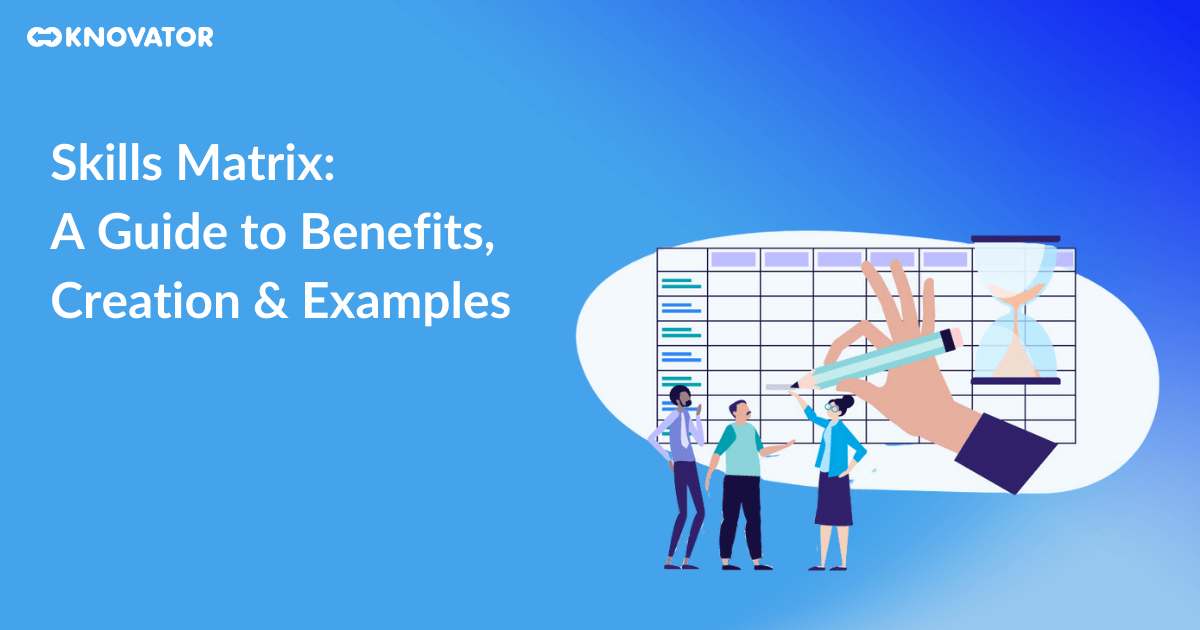In the ever-changing world of career advancement, skill is important. Think about easily figuring out, keeping track of, and improving the skills that help you and your team succeed. That’s where skill matrices come in – they help with the challenge of knowing and improving skills.
Don’t know about them? You needn’t worry. In this blog, we’ll explore skill matrices in simple terms, why they matter, and how to make one without stress.
By the end, you’ll know much about skill matrices and have templates to make your own. It will help you get better at skills and succeed.
So, let’s begin!
What is a Skills Matrix?
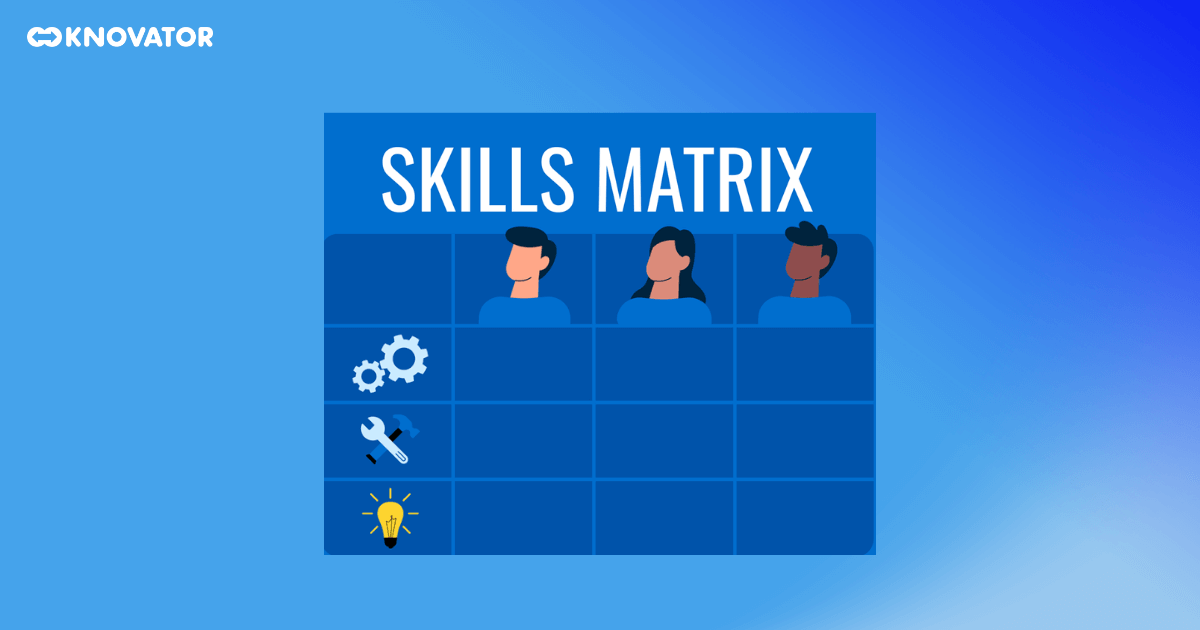
Now, let’s talk about the competency matrix. This is a bit like a skills matrix but focuses more on knowing if someone can do a job well. It examines knowledge, experience, and how well someone performs tasks. So, while both matrices are similar, they focus on slightly different things.
The skills matrix looks at people’s skills, and the competency matrix looks at how well they use those skills for a job.
Example of a Skills Matrix
As previously said, the most basic skill matrix is a table with employee names and their talents or competences, along with their appraisal.
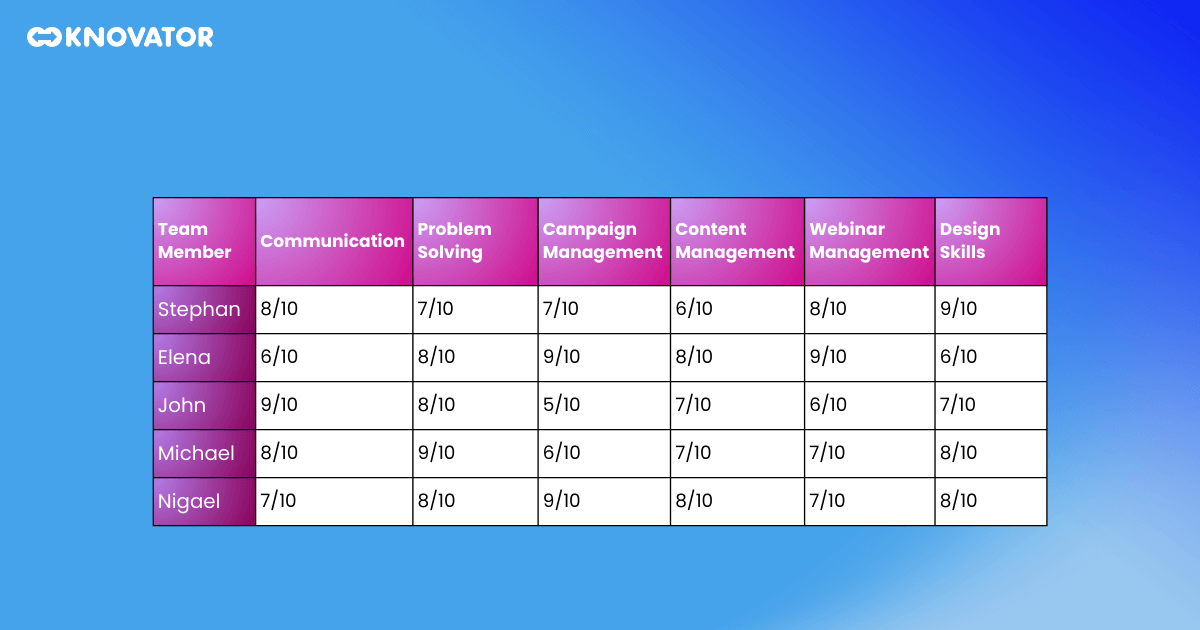
So, this simple table is like a superhero tool. It helps teams work better together by finding strengths and areas to improve.
Importance of a Skills Matrix

Benefits for HR Departments and Project Management Teams:
- Resource Allocation: A skills matrix lets teams see who’s good at what. It helps assign tasks to the right people, ensuring that projects are done efficiently.
- Identifying Gaps: When skills are laid out in a matrix, it’s easier to spot where there might be gaps. It helps in planning for training and development, making the team stronger overall.
- Optimized Workforce: By knowing each team member’s skills, HR can ensure that the workforce is balanced and that there are no overloaded or underutilized employees.
- Succession Planning: Seeing who can fill in for someone else if unavailable helps create backup plans. It is crucial for the smooth running of projects.
- Efficient Communication: When everyone knows each other’s skills, communication becomes clearer. If someone needs help, they know who to approach.
Role in Team Organization, Hiring, and Employee Vacation Planning:
- Team Organization: Skills matrices help in forming teams that complement each other. A mix of skills ensures that tasks are tackled from various angles.
- Hiring: When new members join, their skills can easily match the team’s needs. It ensures that the team becomes stronger with the new addition.
- Employee Vacation Planning: Managers can plan vacations better with a skills matrix. They’ll know who can take on responsibilities when someone is away.
- Reduced Bottlenecks: There are fewer delays when people with the right skills are on the job. Work moves faster, and projects get completed on time.
- Boosted Confidence: Team members feel more confident when they know their skills are acknowledged. It boosts morale and job satisfaction.
Differentiating Skills Matrix and Competency Matrix
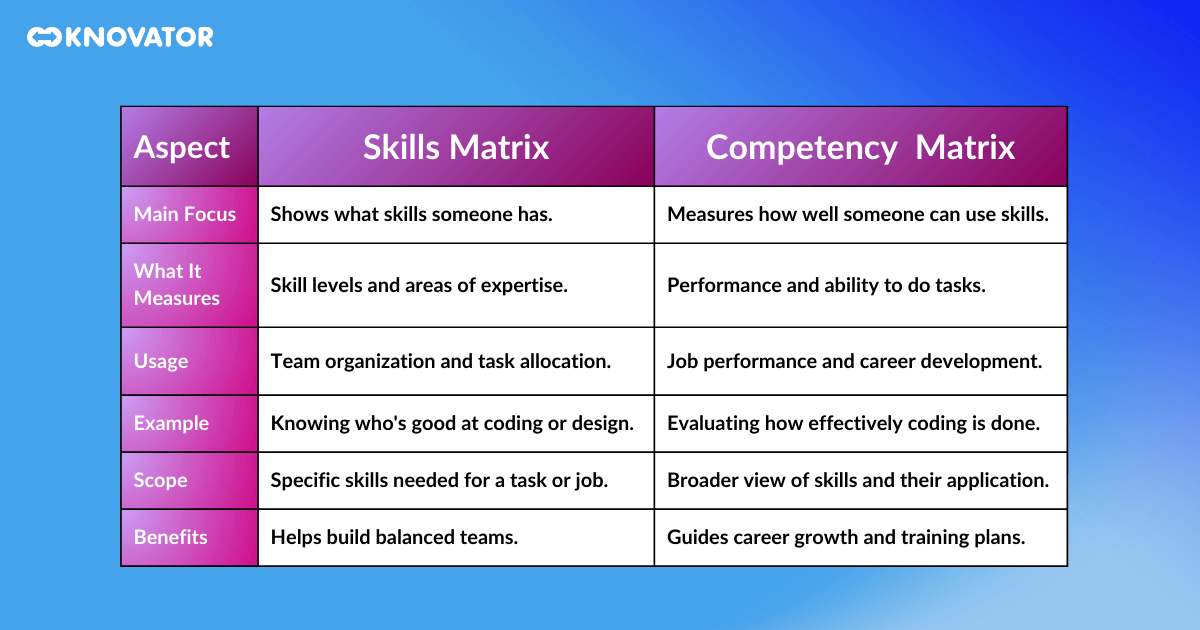
| Aspect | Skills Matrix | Competency Matrix |
| Main Focus | Shows what skills someone has. | Measures how well someone can use skills. |
| What It Measures | Skill levels and areas of expertise. | Performance and ability to do tasks. |
| Usage | Team organization and task allocation. | Job performance and career development. |
| Example | Knowing who’s good at coding or design. | Evaluating how effectively coding is done. |
| Scope | Specific skills needed for a task or job. | Broader view of skills and their application. |
| Benefits | Helps build balanced teams. | Guides career growth and training plans. |
In a nutshell, a skills matrix is like a piece of a puzzle that shows each person’s skills, while a competency matrix looks at how well those skills are used. So, a skills matrix is like finding the pieces, and a competency matrix is like seeing the complete picture they create. Both are important in their way, helping teams and individuals succeed.
How to Create a Skill Matrix?
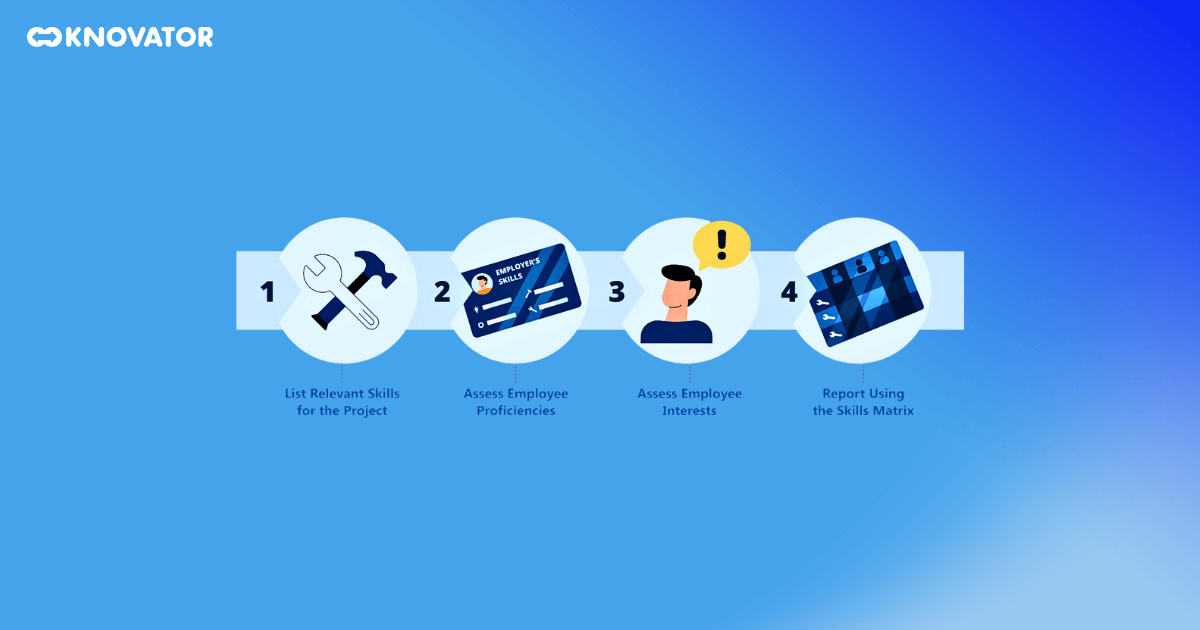
Step 1: Building a Skill Database
Imagine you’re collecting gems for a game. In this case, the gems are skills. Gather a list of all the skills that matter in your team or project. For instance, coding, designing, and problem-solving could be your gems if you’re in a tech team.
Step 2: Setting Up a Grading System
Think of this as giving stars in a game, but for skills. Create a scale, like 1 to 5 or low to high, to rate how good someone is at a skill. Keep it simple – 1 might be “learning,” and five could mean “expert.” This way, you can tell who’s a master and who’s still practicing.
Step 3: Evaluating Employees’ Skills
Now, it’s time to see what skills your team members have. Ask them to rate themselves honestly using the grading system. But wait, it’s not just self-ratings. Others in the team, like managers or peers, should also rate the person. It gives a complete picture.
Step 4: Visualizing Data for Insights
Imagine turning numbers into a colorful painting. That’s what data visualization is like. Take the skill ratings and put them in the skill matrix table. Use colors like green for high skills and red for areas needing improvement. This way, you’ll see the whole team’s skills at a glance.
Step 5: Finding the Golden Nuggets
Now that your skill matrix is ready, you’re like a treasure hunter seeking gold. Look for patterns. Are most people good at coding but could be better at communication? It helps spot the team’s strengths and weaknesses.
Step 6: Filling the Gaps
Remember those missing puzzle pieces? If you spot low or missing skills, it’s time to act. Plan training, workshops, or mentorships to level up those skills. It’s like getting power-ups in a game to beat tough levels.
Step 7: Keep the Matrix Alive
Just like a plant needs water, your skill matrix needs updating. As skills grow and change, update the ratings. It helps you track progress and keep aiming higher.
Step 8: Celebrate Progress
Imagine winning a medal in a race. When your team’s skills improve, celebrate! Acknowledge their growth and efforts. It boosts morale and motivates everyone to keep leveling up.
Making a skill matrix is like crafting a map for success. You collect skills, rate them, see how good everyone is, and find improvement areas. It’s like playing a game where you level up skills instead of characters. And just like a hero who saves the day, your skill matrix will guide your team toward success!
Chart a Bright Future with Skill Matrices
As we wrap up this journey through the world of skill matrices, one thing becomes crystal clear – these seemingly simple charts hold immense power. They’re not just tables; they’re strategic tools that empower HR departments to form dream teams, aid project managers in navigating the complex sea of tasks, and drive personal and organizational growth. By identifying strengths, addressing weaknesses, and fostering skill development, skill matrices become the guiding stars in the constellation of success.
So, whether you aim to lead a team to victory or seek personal advancement, remember: a skill matrix is your compass to steer you toward smoother waters and brighter horizons.
Start creating your own, and watch your path to success unfold.
